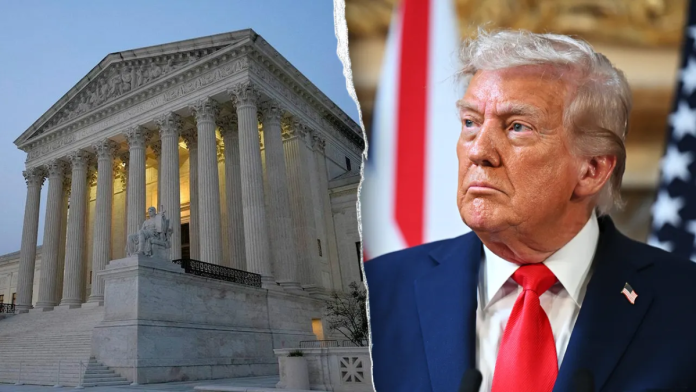The U.S. Supreme Court is set to hear a major case that could shape how presidents use emergency powers to impose tariffs. The case focuses on whether a president can use emergency laws to impose tariffs without approval from Congress. Many people, especially small business owners, are closely watching what the court decides.
Donald Trump used these emergency powers to bring in new tariffs on products from many countries, including Canada, Mexico, and China. He said these tariffs were needed to pressure other countries to act on problems like drug smuggling and trade imbalances. This case now questions if those actions were within legal limits.
Why Did This Case Reach the Supreme Court?
The case began after Trump declared two national emergencies to justify new tariffs. One emergency linked the fentanyl drug crisis to tariffs on Canada, Mexico, and China, set at 35% for Canada. These did not apply to goods already covered under the Canada-U.S.-Mexico trade deal. The second emergency focused on the U.S. trade deficit, leading to “reciprocal” tariffs meant to match the taxes other countries put on American products.
Both emergency actions were taken under the 1977 International Emergency Economic Powers Act (IEEPA). The government said this law gave Trump the power to use tariffs during national emergencies. But small businesses and several states challenged this, arguing the law never mentions tariffs and that only Congress can approve them. They also said the fentanyl crisis and trade deficit were not valid reasons to use emergency powers for tariffs.
Two lawsuits were filed and later combined after lower courts ruled in favour of the business owners. If the Supreme Court agrees with those rulings, small businesses could get up to US$100 billion back in tariff payments — something the government says could cause serious financial strain.
Senate stuns Washington — lawmakers vote to overturn Trump’s $1 trillion global tariff policy in rare bipartisan revolt
How Are Businesses Being Affected by the Tariffs?
The tariffs have had a strong impact on more than 700 American small businesses, many of which are now supporting the case before the Supreme Court. They have joined hands under a group called “We Pay the Tariffs” to challenge the measures. These businesses say the rising cost of importing goods is hurting their growth and daily operations.
Small business owners also say the rules around tariffs have changed many times, making it difficult to plan ahead. Even companies that manufacture their products in the U.S. report paying more for raw materials, as many of these supplies come from countries hit by the tariffs.
Owners of businesses selling pet products, travel items, sports gear, and other goods shared how the tariffs have slowed them down. Many said they had to stop hiring, delay expansion plans, and reduce investment in new products because of higher costs.
Several business owners shared their concerns with lawmakers at both state and national levels. While many lawmakers agreed that businesses were under pressure, they hesitate to take firm action. Business owners say political tensions and fear of backlash are stopping leaders from openly opposing the tariffs while the case is still being reviewed by the Supreme Court.
U.S. senate defies white house—lawmakers vote to terminate Brazil tariffs in rare bipartisan showdown
What Could the Supreme Court Decide?
The Supreme Court is expected to issue its decision soon. Lawyers for the business owners are hopeful since lower courts had ruled in their favour, saying they need to win only one argument, while the government must win on all points.
Many trade and legal experts believe the court may strike down the tariffs, saying emergency powers were used incorrectly. Others think the court could still back the president, noting past support for strong presidential powers in foreign affairs.
A ruling against the tariffs could limit how future presidents use emergency laws for trade. The case has drawn major attention because it could impact small businesses, the U.S. economy, global trade ties, and the balance of power between the President and Congress.


